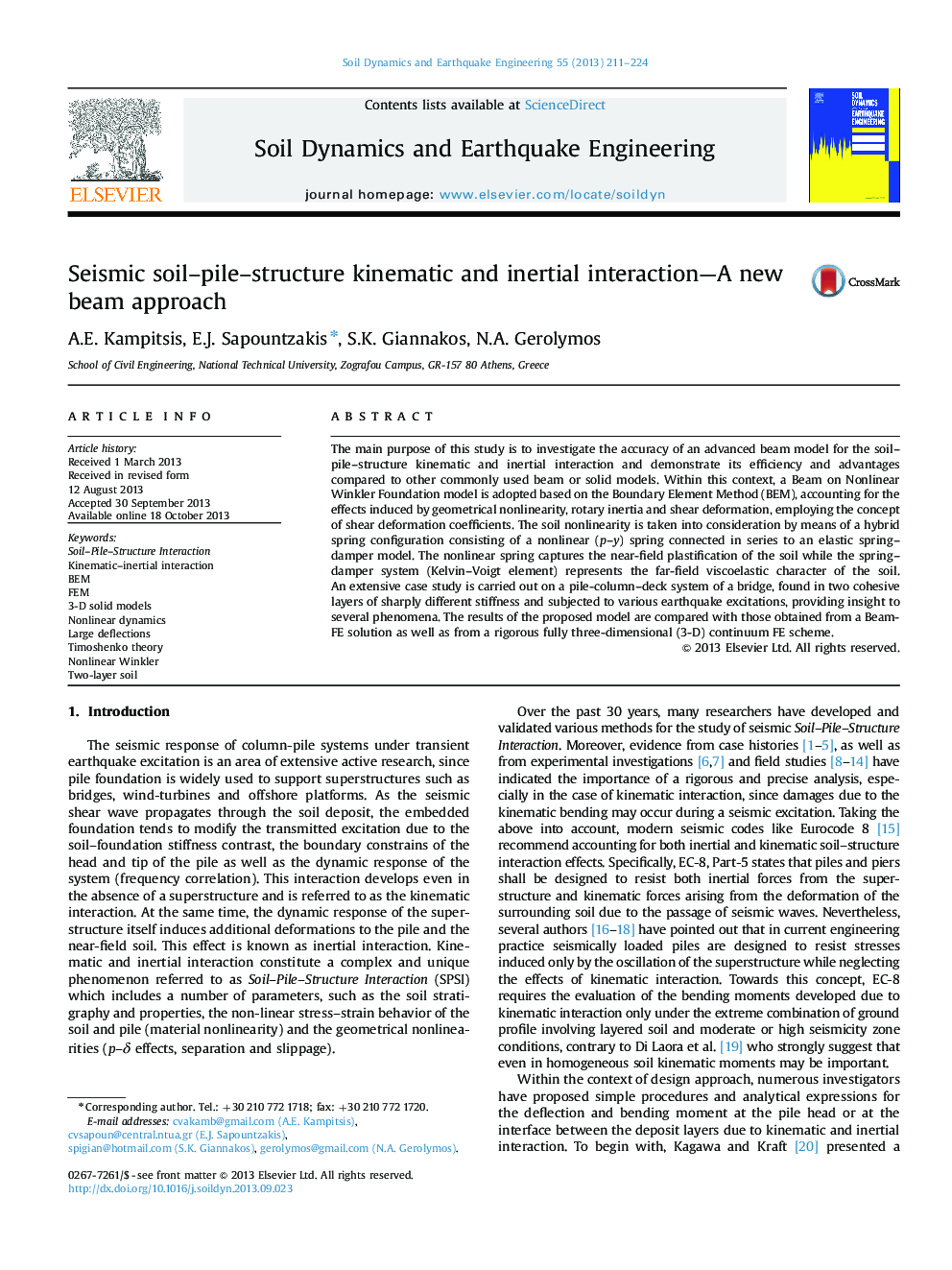| Article ID | Journal | Published Year | Pages | File Type |
|---|---|---|---|---|
| 304176 | Soil Dynamics and Earthquake Engineering | 2013 | 14 Pages |
•Advanced beam model for the soil–pile–structure kinematic and inertial interaction.•Computational efficiency is verified through comparison with 3-D FE model.•Geometrical nonlinearity, shear deformation and rotary inertia are considered.•Soil nonlinearity is taken into account by means of hybrid spring configuration.•A calibration methodology of the spring and dashpot configuration is proposed.
The main purpose of this study is to investigate the accuracy of an advanced beam model for the soil–pile–structure kinematic and inertial interaction and demonstrate its efficiency and advantages compared to other commonly used beam or solid models. Within this context, a Beam on Nonlinear Winkler Foundation model is adopted based on the Boundary Element Method (BEM), accounting for the effects induced by geometrical nonlinearity, rotary inertia and shear deformation, employing the concept of shear deformation coefficients. The soil nonlinearity is taken into consideration by means of a hybrid spring configuration consisting of a nonlinear (p–y) spring connected in series to an elastic spring–damper model. The nonlinear spring captures the near-field plastification of the soil while the spring–damper system (Kelvin–Voigt element) represents the far-field viscoelastic character of the soil. An extensive case study is carried out on a pile-column–deck system of a bridge, found in two cohesive layers of sharply different stiffness and subjected to various earthquake excitations, providing insight to several phenomena. The results of the proposed model are compared with those obtained from a Beam-FE solution as well as from a rigorous fully three-dimensional (3-D) continuum FE scheme.
